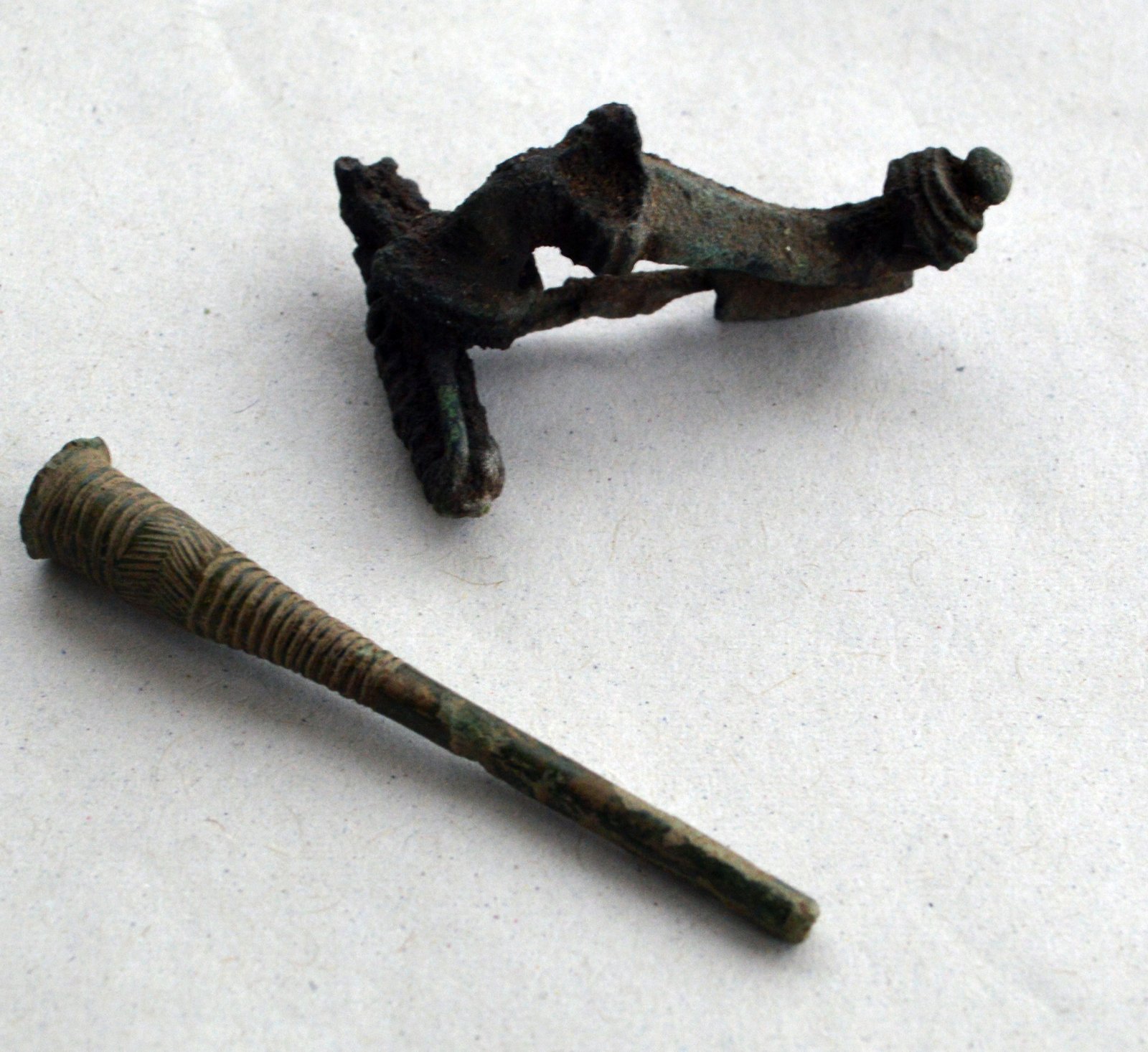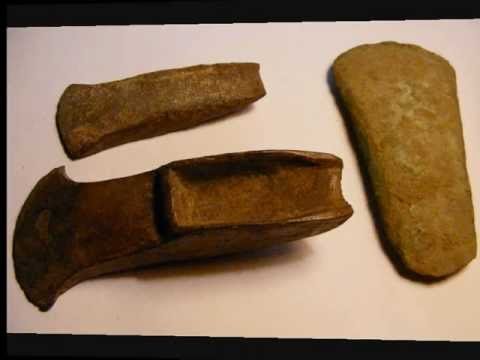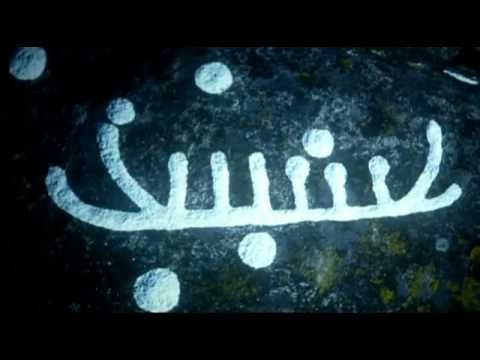The Nebra Sky Disk is a bronze disk with a blue-green patina (originally black) and inlaid with gold symbols. These are interpreted generally as a sun or full moon, a lunar crescent, and stars (including a cluster interpreted as the Pleiades). Two golden arcs along the sides, marking the angle between the solstices, were added later. A final addition was another arc at the bottom surrounded with multiple strokes (of uncertain meaning, interpreted as a Sun ship with numerous oars). The disk is attributed to a site near Nebra in Germany, and associatively dated to c. 1600 BCE. It has been associated with the Bronze Age Unetice culture.
The Unetice culture is distinguished by its characteristic metal objects including ingot torcs, flat axes, flat triangular daggers, bracelets with spiral-ends, disk- and paddle-headed pins and curl rings which are distributed over a wide area of Central Europe and beyond. Linguists have determined through an analysis of hydronomic patterns that the people of this culture must have spoken Indo-European languages, with pre-proto-Germanic characteristics in the area to the north of the Sudeten and Ore Mountain ranges, including the site where the Nebra Sky Disk was manufactured and deposited.
The discovery site is a prehistoric enclosure encircling the top of a 252 metres elevation in the Ziegelroda Forest, known as Mittelberg (“central hill”), some 60 km west of Leipzig. The surrounding area is known to have been settled since the Neolithic and Ziegelroda Forest is said to contain around 1,000 barrows, whose occupants are of a physical type still common in North Central Europe today. The enclosure is oriented in such a way that the sun seems to set every solstice behind the Brocken, the highest peak of the Harz mountains, some 80 km to the north-west. The significance of the site to prehistoric dwellers is underlined by the proximity to the much older Goseck circle. Archaeologists generally agree that Goseck circle was used for astronomical observation. Together with calendar calculations, it allowed coordinating an easily judged lunar calendar with the more demanding measurements of a solar calendar, embodied in a spiritual religious context.
The Nebra Sky Disk is likewise considered to be an astronomical instrument as well as an item of religious significance. The find reconfirms that the astronomical knowledge and abilities of the people of the European Bronze Age included close observation of the yearly course of the Sun, and the angle between its rising and setting points at summer and winter solstice. While Stonehenge and the Neolithic circular ditches such as the 5th millennium BCE Goseck circle were used to mark the solstices, the disk is the oldest known portable instrument to allow such measurements.






1 Comment on Secrets of the Star – Disk 1